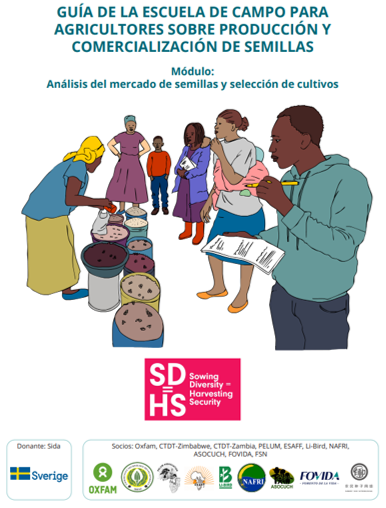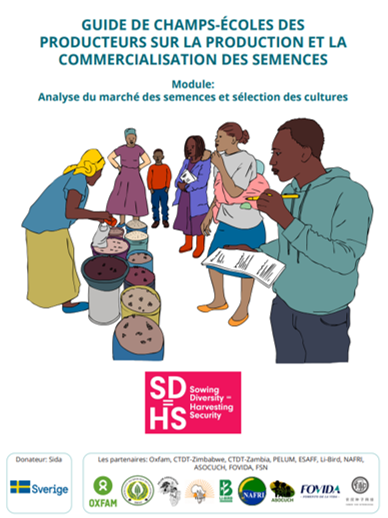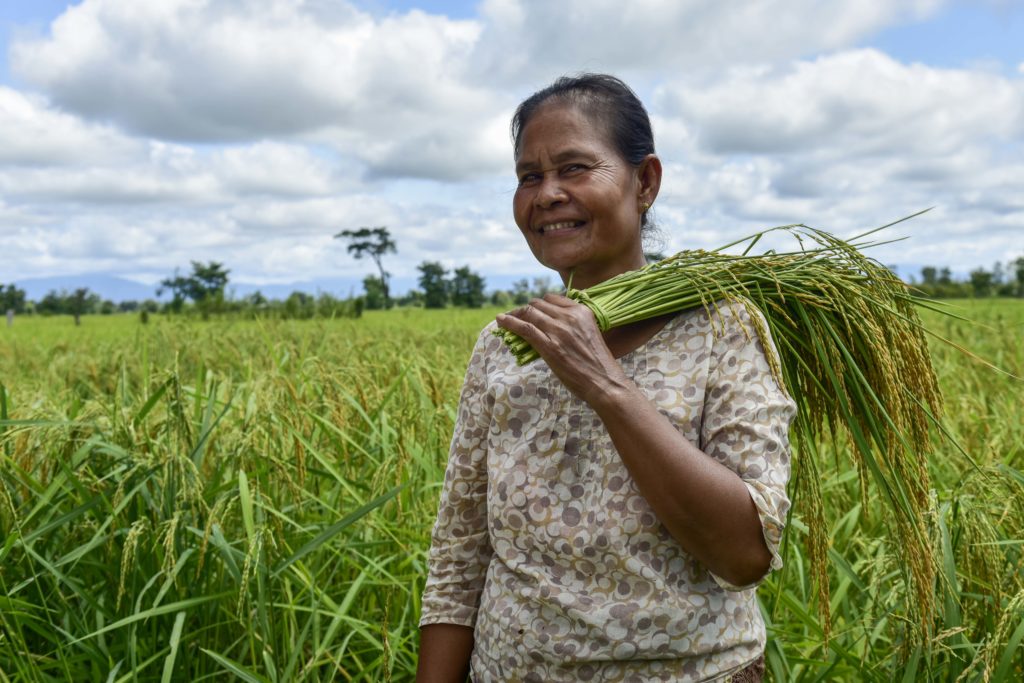On March 30 2021, some sixty farmers, breeders, researchers, and representatives of donor organisations and NGOs came together to seek common ground for strengthening plant breeding and seed system functioning.
Farmers set the stage by speaking about their breakthroughs and challenges in Participatory Plant Breeding, the appreciation they have for their partnerships with breeders, the need for new diversity to stay ahead of an unpredictable climate. Funders stressed the need for innovation in plant breeding: to increase productivity, deal with climate change, meet the demands of farmers and markets. Strong partnerships between NARS and CGIAR centers are critical, they said, yet farmers too need to be involved if innovations are to respond to farmers’ needs and end up in their fields.

There was broad appreciation for the statement made by one funder that plant breeding is more than a technology, that it is about people and their seeds and should be linked to the process of strengthening the rights and capacities of farmers towards a more just society. From this perspective, plant breeding approaches see farmers as co-creators of knowledge who have an important role in plant breeding.
Key findings of this remarkable meeting are summarized below.
What stood out
A special conversation
We feel the first day of this workshop was special. It is rare for farmers to sit together with scientists, donors and NGOs in a workshop setting. And it is rare for the two worlds of formal sector plant breeding and participatory plant breeding to come together, with mutual appreciation, in search of ways to better work together. It is, we hope, a step towards a better understanding and recognition of the role that farmers can play in plant breeding. It also opened ways to look at some of the obstacles that are in the way of future collaboration, which we intend to address in upcoming workshop sessions.
Eagerness to collaborate, and to discuss the how of collaboration
Farmers spoke of how happy they are to work with breeders, to increase their varietal diversity, improve adaptation of local varieties and advance seed quality and quantity. They balanced their sense of pride and accomplishment with calls for help to be more effective (‘We need more breeders to do this with us’). Breeders and crop researchers, from their side, see an urgent need to (better) work with farmers, e.g., to better understand their priorities and increase varietal adoption rates. Participants agreed there is a world to win in bridging the gap between breeding and research organisations and farming communities, but also in strengthening the collaboration among other key seed system actors present in the workshop. Long-term commitment by all actors, including donors, was seen to be indispensable to the process of bridging these gaps. Discussions on how to build this collaboration yielded several themes that will form the content of day 2 (see bottom of page 2).
Similar objectives, diverse motivations and values
The participants flagged various objectives; breeding efficiency and genetic gains, establishing product profiles, responding to market opportunities, varietal diversity, resilience, farmers’ rights, curiosity, pride. While the overall aim of innovating plant breeding and enabling farmers to benefit is shared by all participants, their joint discussions brought out how diverse actors bring to the table their own motivations and values. Often these are complimentary, sometimes they are not in close alignment. Making these objectives explicit and finding agreement on shared (governance) principles will lay the foundation for developing future collaborative programmes of work.
Complementarity between PPB and ‘on-station’ breeding
Bringing together the resources and skills of researchers and farmers can, through their complementary contributions, make an important difference in breeding for climate change adaptation, increasing genetic gains and, where needed, speeding varietal turnover. The potential of PPB to involve a large number of farmers and communities in many different agroecosystems, in a process where farmers and researchers are able to identify real-life production bottlenecks and define more appropriate breeding objectives, was discussed and in general agreed on. In strong collaboration with public sector breeding institutes, materials can be co-developed and/or evaluated in many sites by different types of farmers, thus increasing the rate of diffusion and adoption of better, appropriate cultivars. Strengthening the plant breeding capacity at public research institutions is a key prerequisite. Furthermore, depending on how farmer-research collaboration is structured, PPB was presented as a vehicle to creating impacts that go beyond those coming from genetic gains per se, e.g., strengthen communities and local markets, advance learning and address social and cultural needs related to seeds and smallholder agriculture.
Scale, and linking (participatory) plant breeding to the wider seed system
Participants mentioned several factors that are necessary for PPB to create impacts at large scale. For example, linking (seed) markets and seed enterprises, training of farmers and researchers for effective collaboration, institutionalizing participatory approaches within NARS, strengthening farmer organisation and capacities for exchange (i.e. farmer field schools and farmer-breeder networks), and addressing seed system policy and governance issues were among the points highlighted.
Themes identified for discussions on Day 2
Topics that both address ‘innovating plant breeding’ and respond to points raised by the farmer representatives in their introductory remarks are formulated into six major themes. They will be presented in more elaborate form in the program for Day 2.
- Bridging the gap: Targeting farmer priorities and establishing lasting farmer-researcher collaboration
- Strengthening public research institutions to support PPB: accessing parent lines and creating new cultivars and breeding populations
- Farmers’ access to crop diversity
- Data and digital tools
- Linking PPB/variety development with wider seed activities
- Policy, governance and ownership
Farmer empowerment cuts across themes and will be emphasized under 1, 3, 5 and 6.
More information?
Contact: anita.dohar@oxfamnovib.nl and frederik.vanoudenhoven@oxfamnovib.nl









